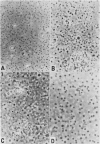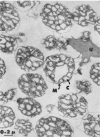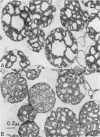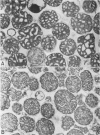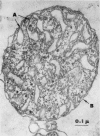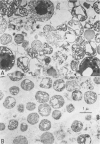Abstract
Sweetpotato mitochondria, that showed respiratory control, were studied with respect to ultrastructure. If fixed in media containing sucrose at 0.4 M, the cristae were dilated and the matrix was highly condensed. A more orthodox ultrastructural form was observed when the mitochondria were fixed in a medium containing sucrose at 0.25 M, i.e., the matrix was more expanded, the cristae were less dilated, and peripherally, the inner membrane element lay adjacent to the outer membrane element. These results are discussed in terms of a sucrose-accessible space (space between outer and inner membrane elements including intracristal space), and a space relatively inaccessible to sucrose (matrix). Ultrastructural shifts were not observed with change in metabolic steady state of the mitochondria. High resolution electron micrographs showed that the ultrastructure of sweetpotato mitochondria is very similar to that of animal mitochondria.
Purity and homogeneity of mitochondrial fractions were followed both by phase-contrast and electron microscopy. Preparations from sweetpotato, using older methods, were relatively homogeneous with respect to particle type and size, whereas avocado preparations contained a high proportion of chloroplasts and cellular debris. A method of purification involving sucrose-density-gradient centrifugation was developed. Purified mitochondria exhibited respiratory control and appeared similar to unpurified mitochondria under the electron microscope.
Full text
PDF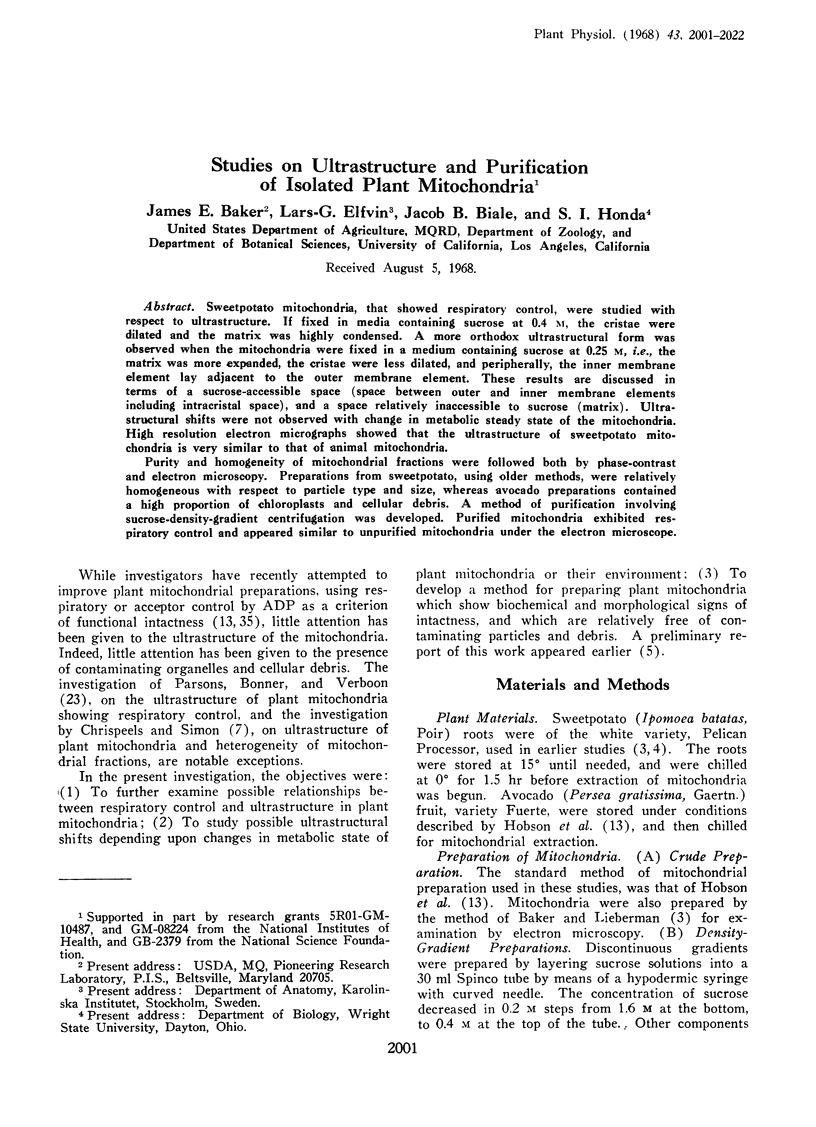
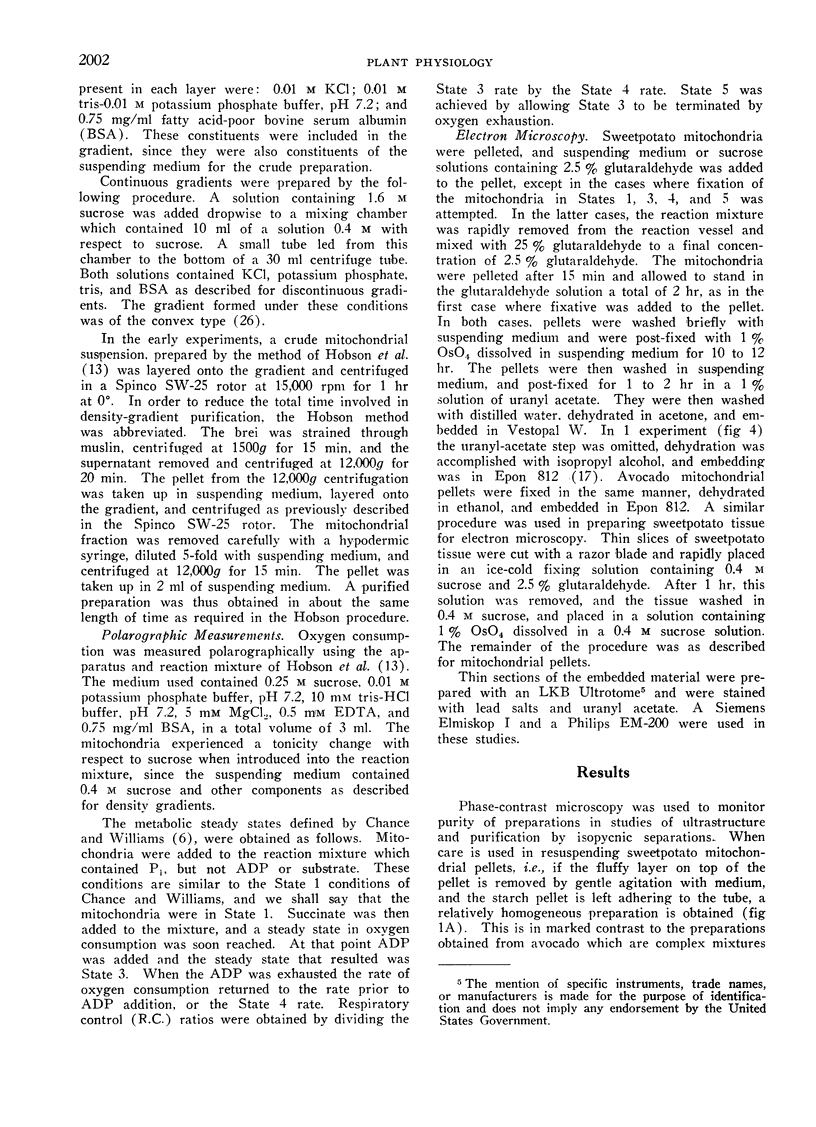
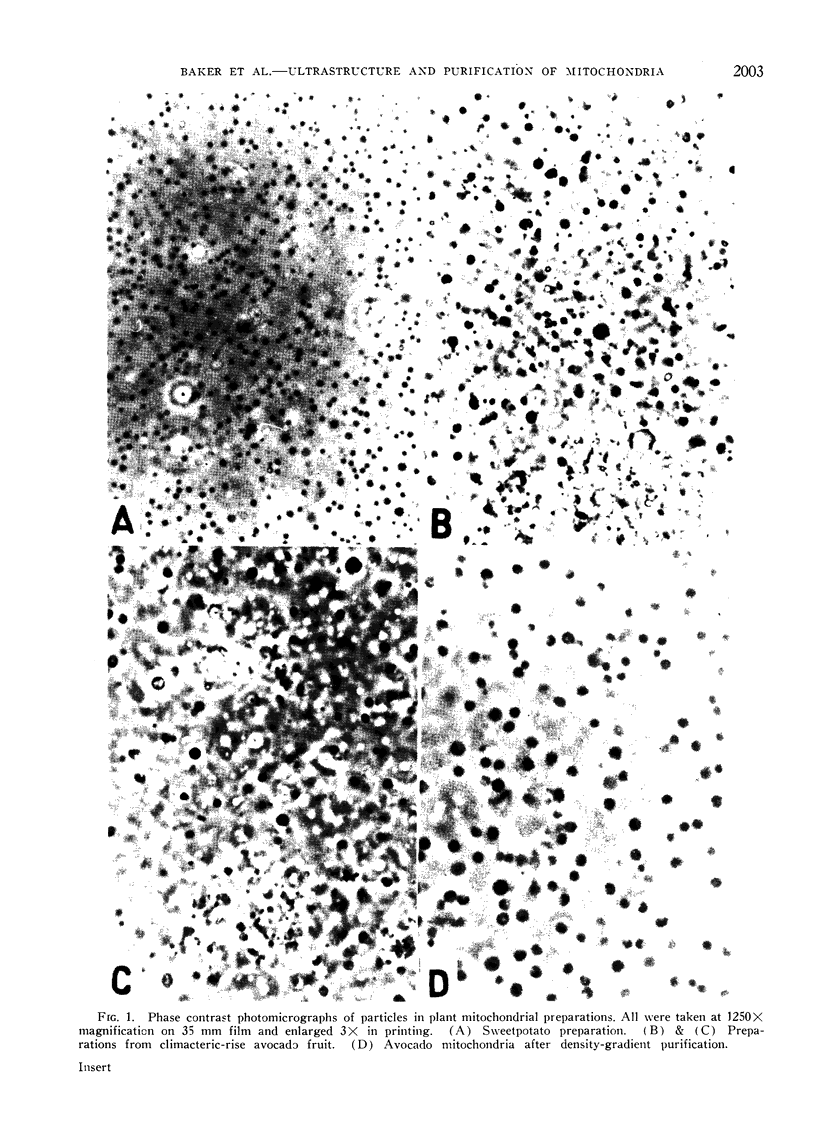
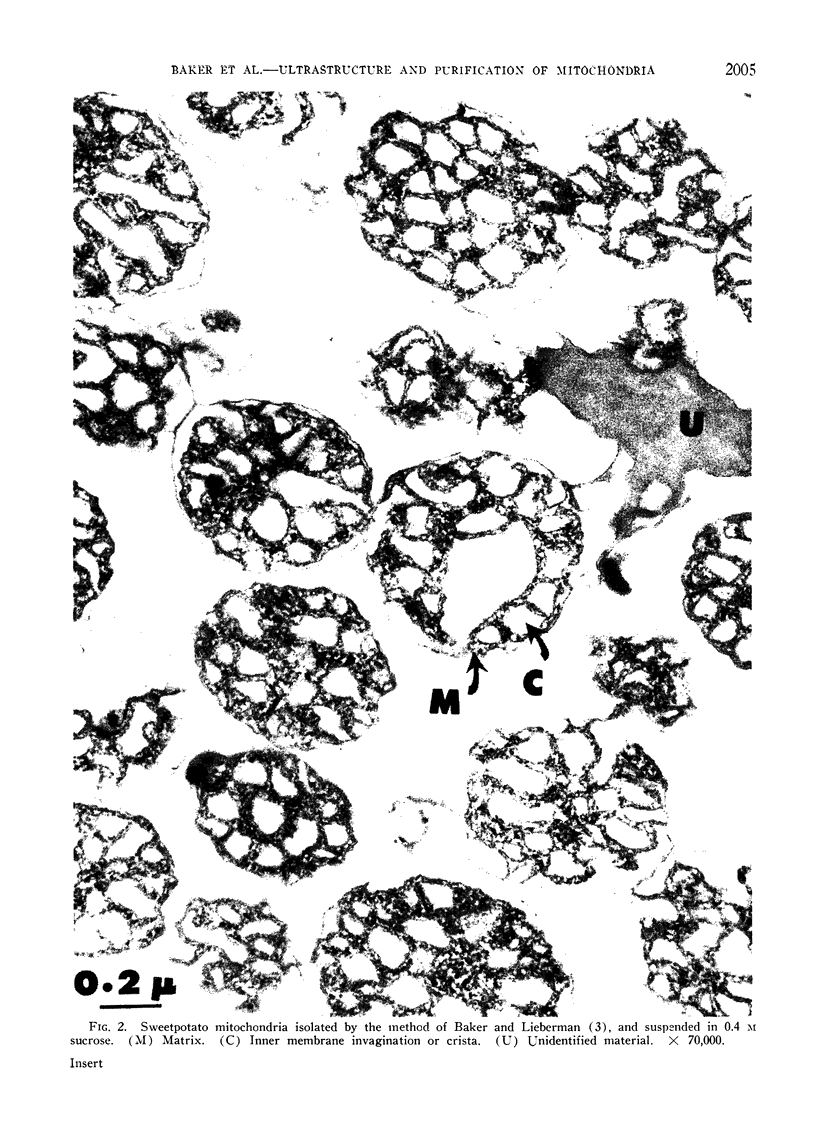
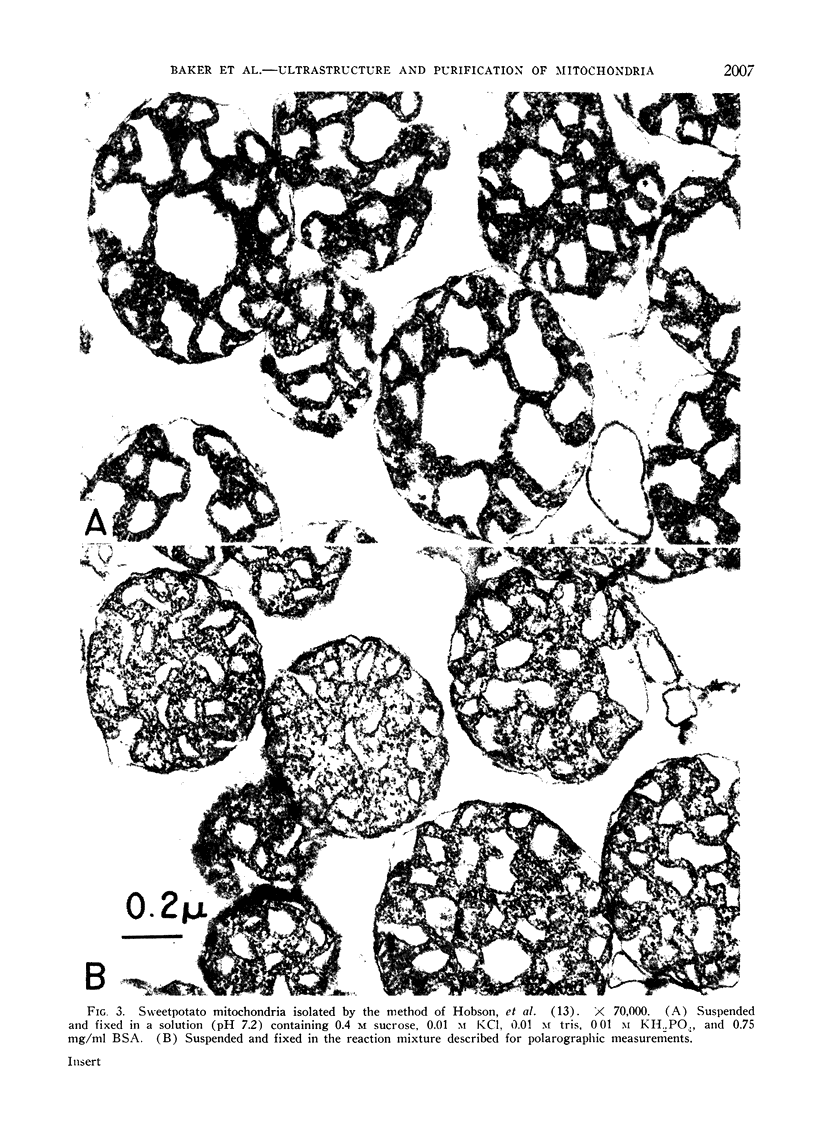
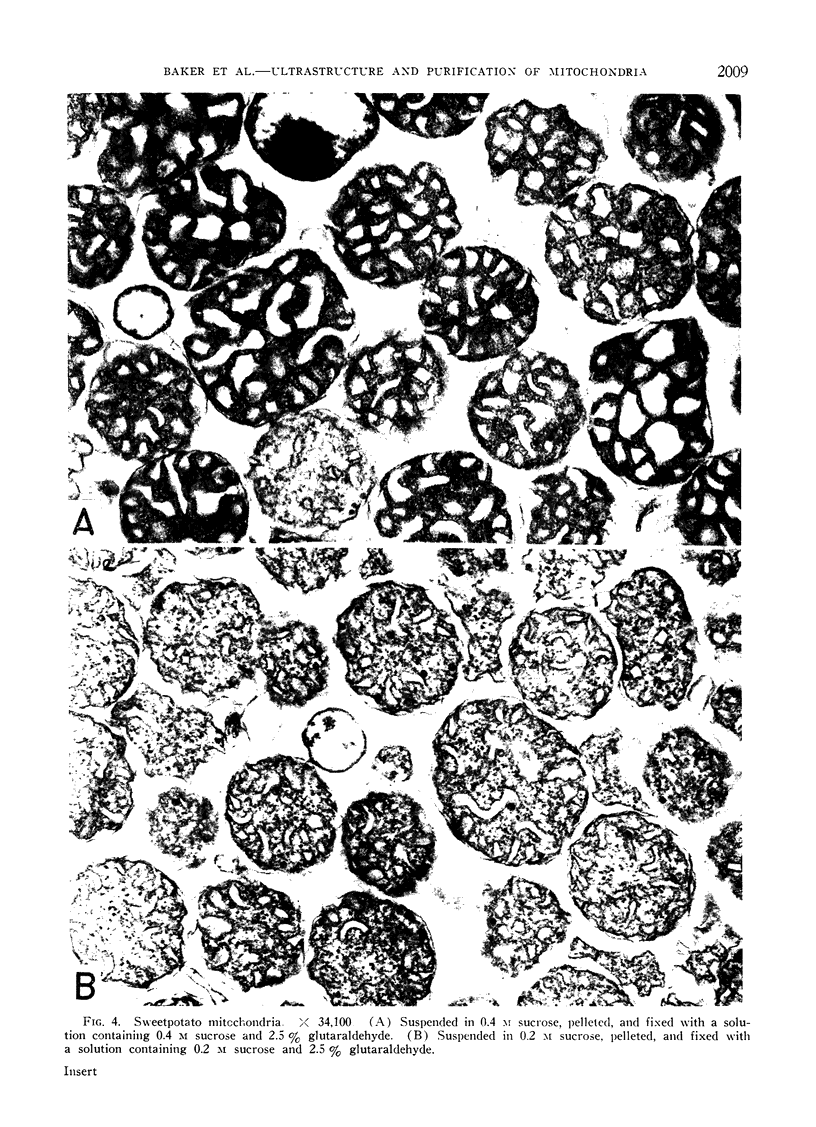
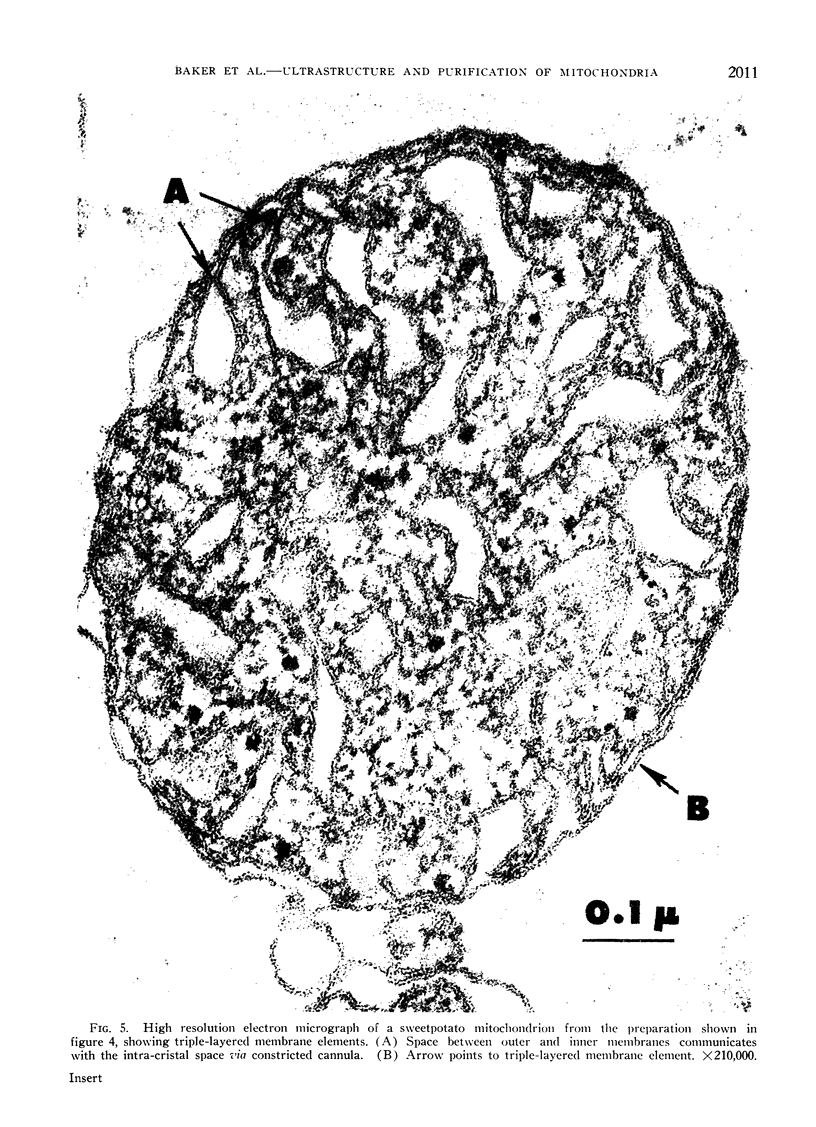
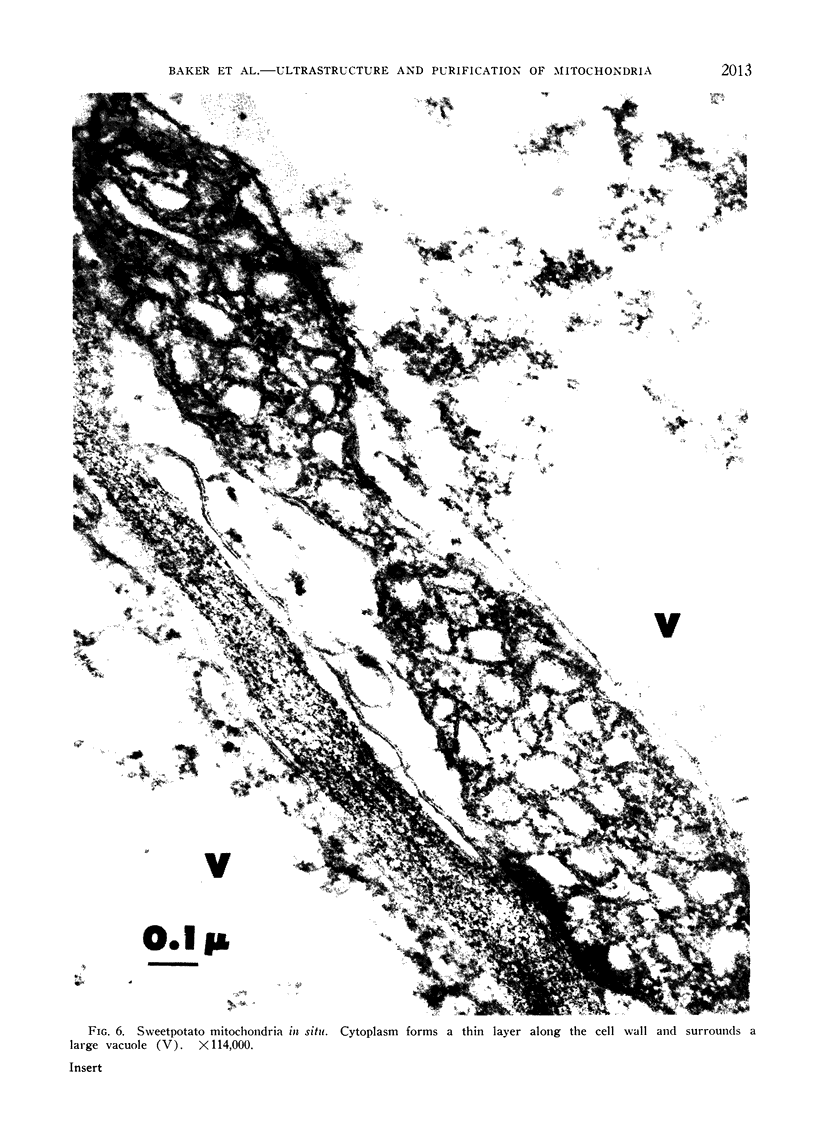
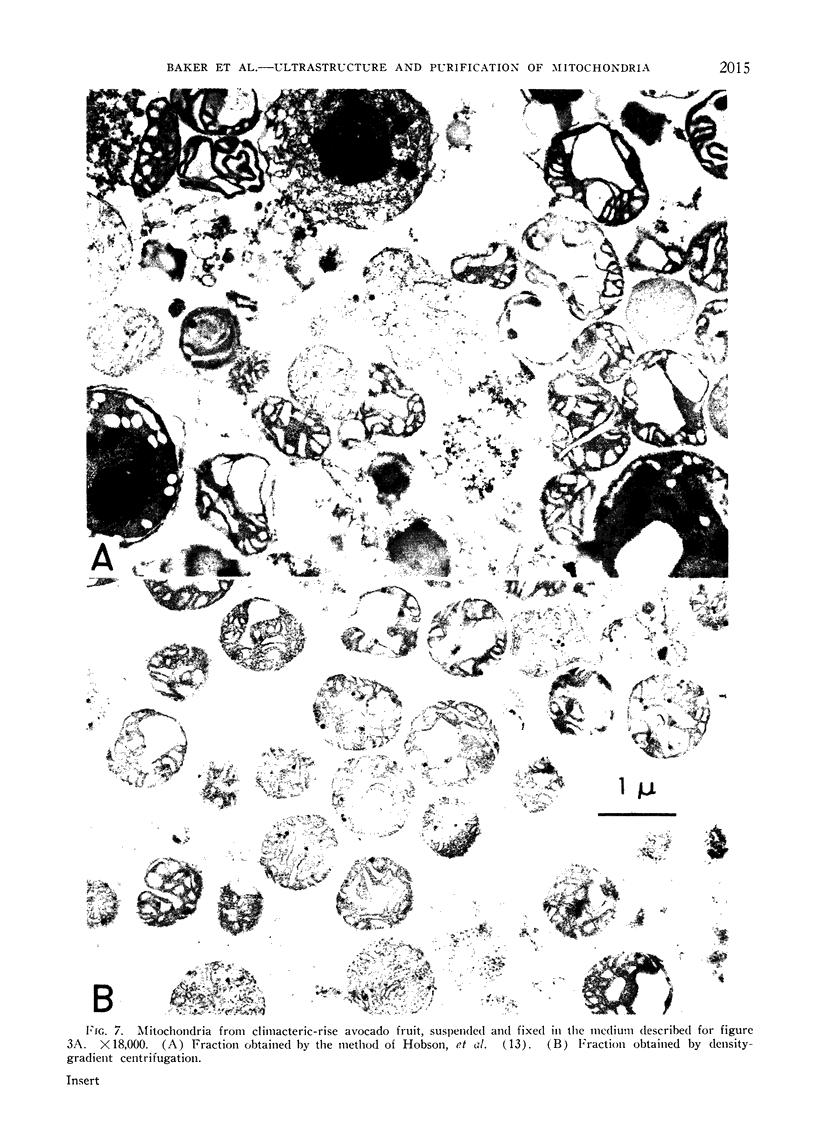
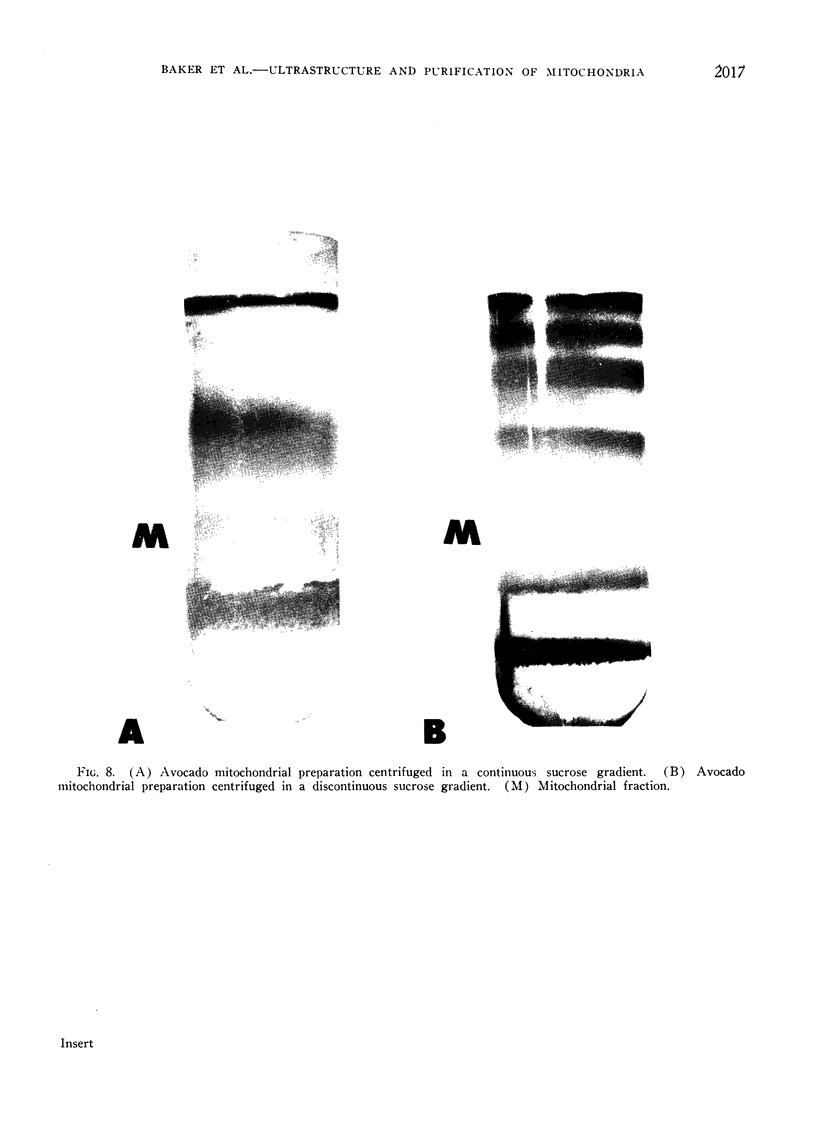
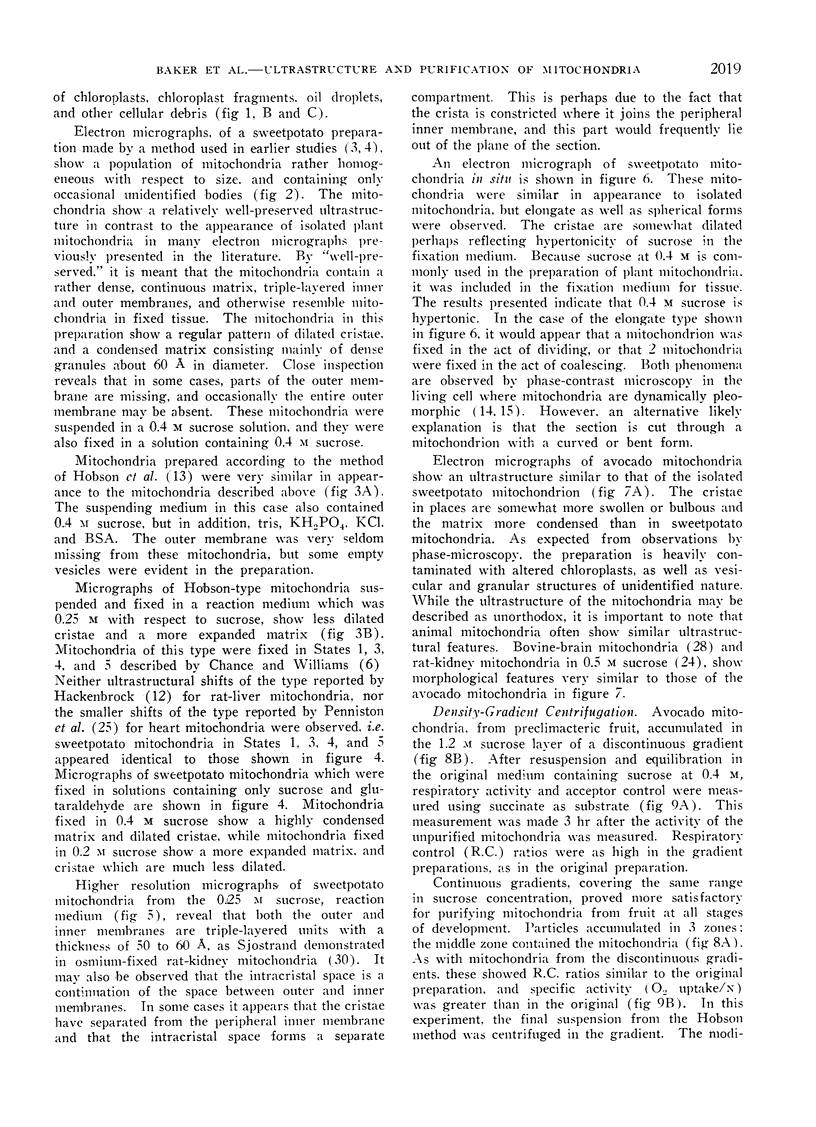
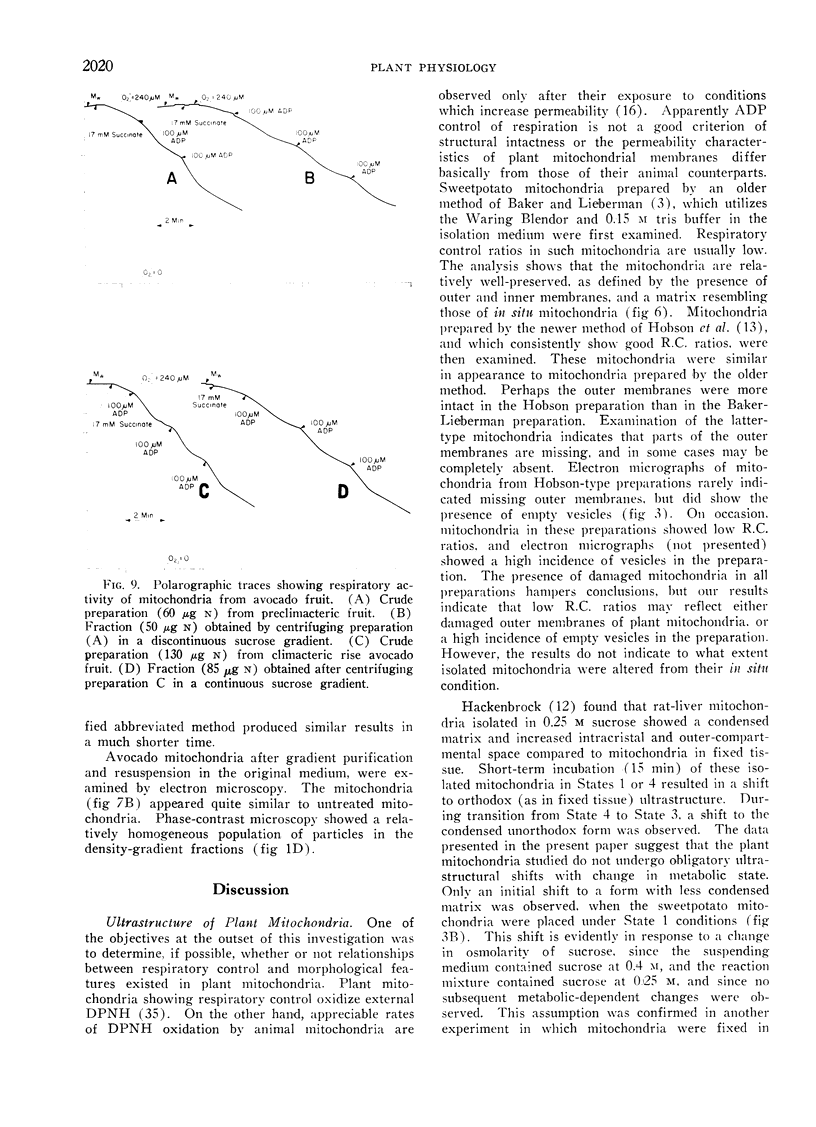
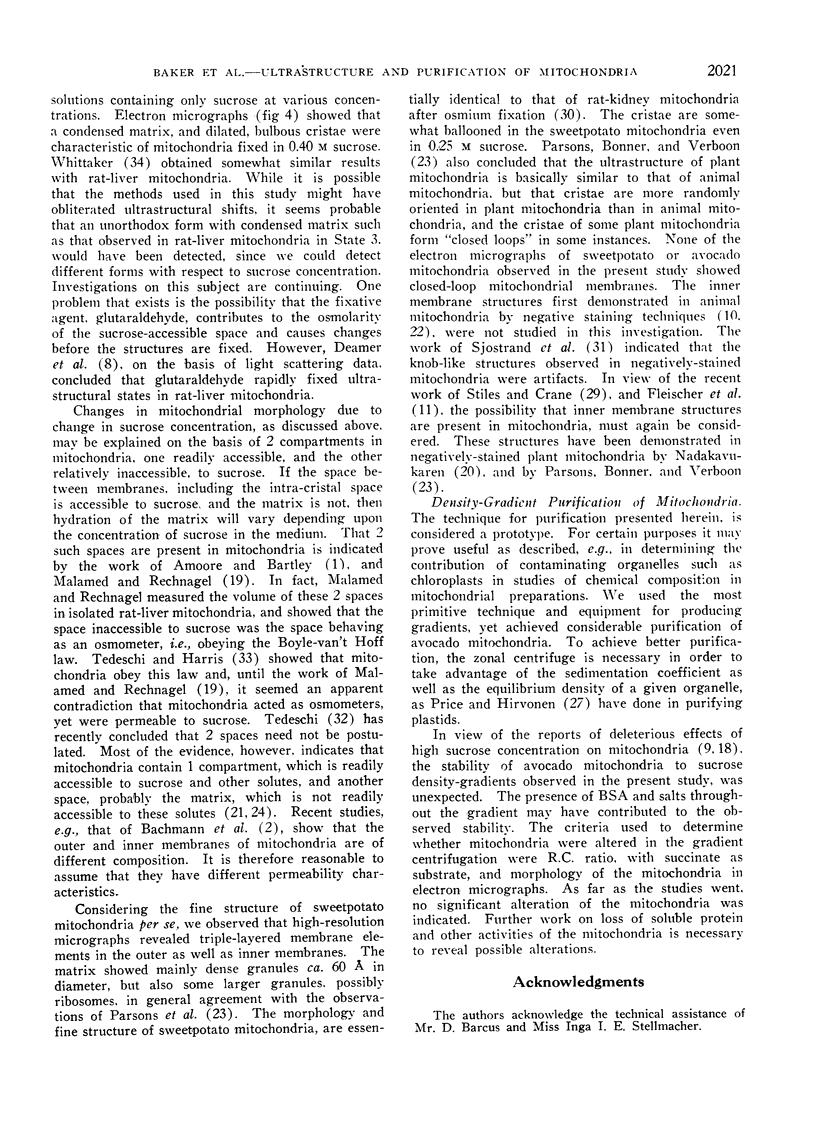
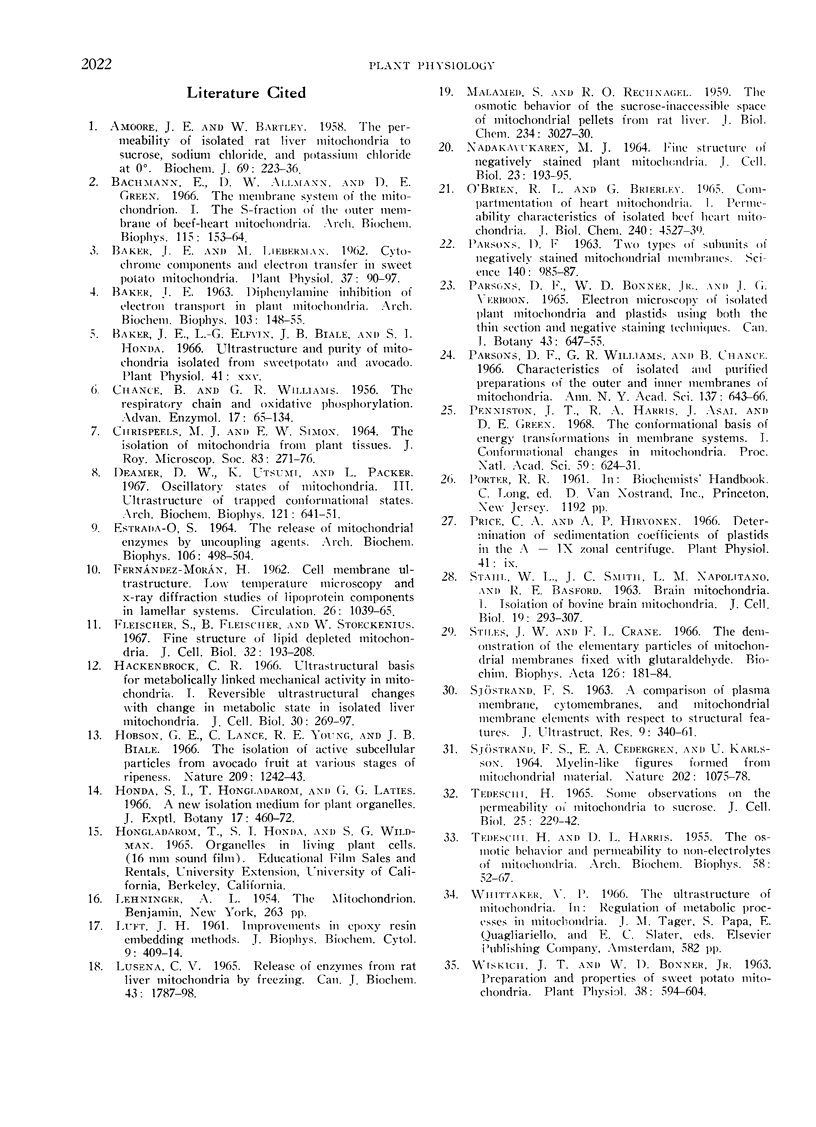
Images in this article
Selected References
These references are in PubMed. This may not be the complete list of references from this article.
- BAKER J. E. DIPHENYLAMINE INHIBITION OF ELECTRON TRANSPORT IN PLANT MITOCHONDRIA. Arch Biochem Biophys. 1963 Oct;103:148–155. doi: 10.1016/0003-9861(63)90020-1. [DOI] [PubMed] [Google Scholar]
- Bachmann E., Allmann D. W., Green D. E. The membrane systems of the mitochondrion. I. The S fraction of the outer membrane of beef heart mitochondria. Arch Biochem Biophys. 1966 Jul;115(1):153–164. doi: 10.1016/s0003-9861(66)81051-2. [DOI] [PubMed] [Google Scholar]
- ESTRADA S. THE RELEASE OF MITOCHONDRIAL ENZYMES BY UNCOUPLING AGENTS. Arch Biochem Biophys. 1964 Jul 20;106:498–504. doi: 10.1016/0003-9861(64)90221-8. [DOI] [PubMed] [Google Scholar]
- Fleischer S., Fleischer B., Stoeckenius W. Fine structure of lipid-depleted mitochondria. J Cell Biol. 1967 Jan;32(1):193–208. doi: 10.1083/jcb.32.1.193. [DOI] [PMC free article] [PubMed] [Google Scholar]
- Hackenbrock C. R. Ultrastructural bases for metabolically linked mechanical activity in mitochondria. I. Reversible ultrastructural changes with change in metabolic steady state in isolated liver mitochondria. J Cell Biol. 1966 Aug;30(2):269–297. doi: 10.1083/jcb.30.2.269. [DOI] [PMC free article] [PubMed] [Google Scholar]
- Lusena C. V. Release of enzymes from rat liver mitochondria by freezing. Can J Biochem. 1965 Nov;43(11):1787–1798. doi: 10.1139/o65-199. [DOI] [PubMed] [Google Scholar]
- STAHL W. L., SMITH J. C., NAPOLITANO L. M., BASFORD R. E. BRAIN MITOCHONDRIA. I. ISOLATION OF BOVINE BRAIN MITOCHONDRIA. J Cell Biol. 1963 Nov;19:293–307. doi: 10.1083/jcb.19.2.293. [DOI] [PMC free article] [PubMed] [Google Scholar]
- TEDESCHI H., HARRIS D. L. The osmotic behavior and permeability to non-electrolytes of mitochondria. Arch Biochem Biophys. 1955 Sep;58(1):52–67. doi: 10.1016/0003-9861(55)90092-8. [DOI] [PubMed] [Google Scholar]
- TEDESCHI H. SOME OBSERVATIONS ON THE PERMEABILITY OF MITOCHONDRIA TO SUCROSE. J Cell Biol. 1965 May;25:229–242. doi: 10.1083/jcb.25.2.229. [DOI] [PMC free article] [PubMed] [Google Scholar]
- Wiskich J. T., Bonner W. D. Preparation and Properties of Sweet Potato Mitochondria. Plant Physiol. 1963 Sep;38(5):594–604. doi: 10.1104/pp.38.5.594. [DOI] [PMC free article] [PubMed] [Google Scholar]



